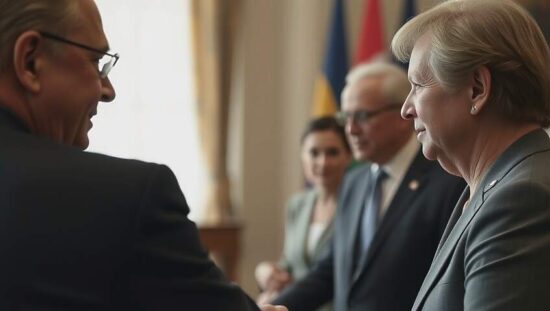The recent meeting between US President Donald Trump and Ukrainian President Volodymyr Zelenskyy at the White House has underscored the complex and shifting dynamics of the ongoing conflict in Ukraine, revealing divergent perspectives on pathways to resolution and raising critical questions about the future of US involvement. Despite a renewed intensification of Russian assaults, Trump expressed a surprising degree of confidence that President Vladimir Putin is actively seeking an end to the war, citing a lengthy private conversation with the Russian leader.
This assertion, delivered alongside Zelenskyy’s presence, immediately drew scrutiny. While Trump claimed Putin desires cessation, Zelenskyy countered by stating a ceasefire is essential but that Putin currently resists it. This apparent disconnect highlights a fundamental obstacle to negotiations and casts doubt on the sincerity of Putin’s reported intentions.
Trump’s optimism regarding potential breakthroughs in Ukraine peace talks, spurred by perceived advancements in the Middle East, also appeared tenuous. While ostensibly supportive, his statements revealed a transactional approach, emphasizing the United States’ own strategic interests. The discussion regarding the potential delivery of Tomahawk missiles further exemplified this: while acknowledging the possibility, Trump stressed the US’s preference to avoid their deployment, seemingly prioritizing domestic concerns over unfettered Ukrainian military aid.
Zelenskyy, in his remarks, reiterated Ukraine’s urgent need for robust security guarantees, articulating the paramount importance of US backing given the relentless Russian aggression. His insistence on security assurances, framed as a lifeline for the Ukrainian people, underscored a growing reliance on US power and a cautious view of potential negotiations without substantial protective commitment.
Trump’s ambiguity surrounding Ukraine’s ability to recapture lost territories – acknowledging the unpredictable nature of conflict – ultimately framed the meeting as less about a clear strategy for Ukrainian victory and more about managing a potentially protracted and increasingly expensive situation. The lingering question remains: does Trump’s apparent willingness to engage with Putin, coupled with a seemingly pragmatic approach to military assistance, genuinely represent a pathway to a sustainable peace, or does it signal a gradual shift in US policy that could leave Ukraine increasingly vulnerable? The political implications for both Washington and Kyiv remain significant and require careful observation.





